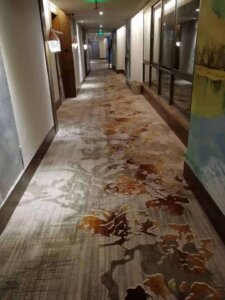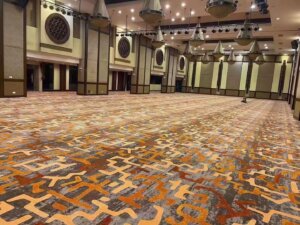How to measure the size of wall-to-wall carpet? Can I lay it myself?
Recently, many customers have asked me about the price of carpets, how to measure carpet sizes, and whether they can lay them by themselves. So let’s briefly talk about it here.
1. Price.
The price of wall-to-wall carpeting depends on the material, weight and area.
Material. The prices from high to low are: wool, nylon, polyester, polypropylene.
Weight. It refers to the weight of yarn used per square meter. For example, a 1200g wool blanket uses 1200g of wool per square meter.
The greater the weight, the thicker and denser the carpet, so the price is more expensive.
area. Everyone knows that large quantities can lead to discounts. Generally, the retail price is for carpets up to 16 square meters, and there will be different discounts for carpets above 16 square meters.
2. Measure the size
How to measure? First of all, the width of the carpet is basically 4m. If the size of the floor of your room is 3.2*3.9, then you need an area of 3.2*4. If the size is 6.8*3.98, you need a size of 4*6.8. Of course, it is best to have a margin to facilitate cutting when paving.
If there are multiple rooms, or the whole house is covered, it will involve the splicing of carpets. You need to draw a sketch, get all the dimensions right, and then calculate. If the area reaches 40 square meters, we can come and measure it.
3. Can you lay it yourself?
Of course you can lay it yourself, but there are two prerequisites.
One premise is that splicing is not required. For example, if the smallest side of a single room is less than 4m, splicing is not required. After placing the carpet in the room, use a utility knife to cut the carpet along the corners.
The second premise is that the carpet baseboards have not been finished yet.
The main function of the baseboard is to cover the gap between the carpet and the wall. A master who has been laying carpets all year round will cut it better, but if you are a first-timer, the gap after cutting may be larger. If there is no skirting line to hold it down, it will affect the appearance.
4. How to fix it?
The cement rough floor is directly covered with carpets, which are usually fixed with nail strips at the corners. If it is a floor or tile floor, the edges are usually fixed with double-sided tape, or left unfixed.
Some people may ask whether the carpet will shift if it is not fixed?
In fact, no, because the larger the area, the weight of the carpet can hold the carpet body down. Secondly, the weight of the furniture can also play a role in fixing it.
On the one hand, nail strips are used to fix the carpet on the rough floor. On the other hand, when the carpet is laid on the rough floor, a layer of underlayment will be laid under the carpet. The nail strips can fix the carpet and at the same time raise the edge of the carpet.
The picture shows the master working on the patchwork

The picture is of the bottom pad and nail strips

https://carpetoriental.com/design/





